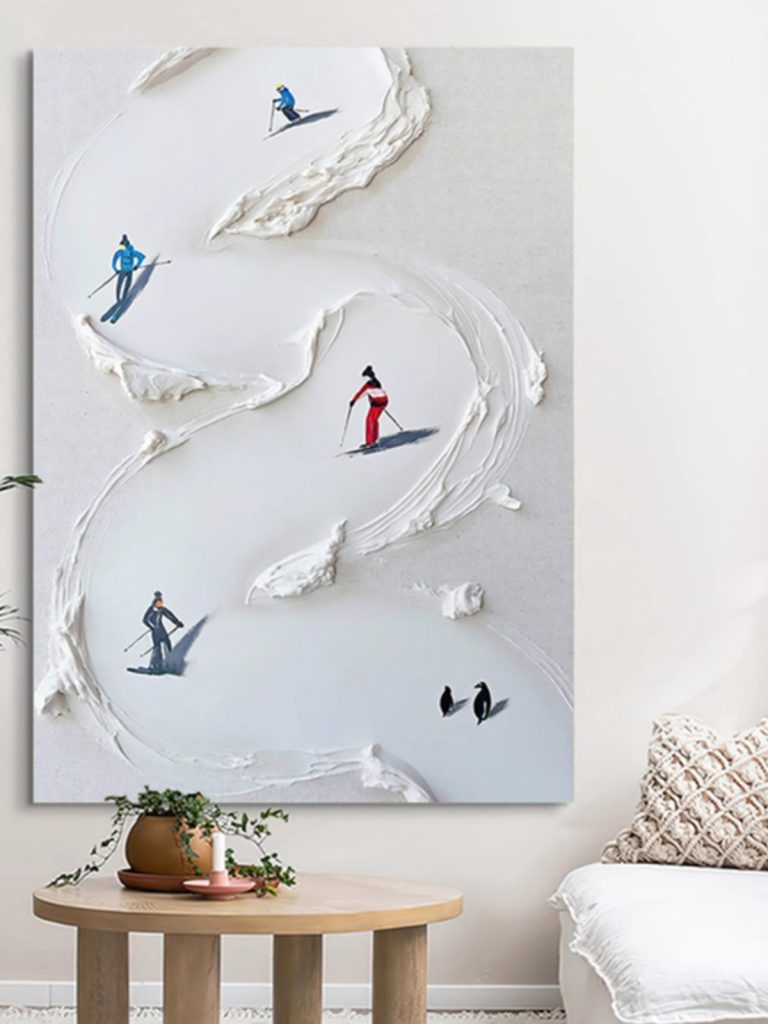The oil painting knife plays a unique and important role in oil painting. Its uses are rich and diverse, bringing distinctive expressiveness and effects to oil painting creation. The following is a detailed introduction for you:
Create a special texture effect
Simulating natural texture: Oil painting knives can simulate the texture of various natural objects. For instance, when painting rocks, scraping the canvas with the side or tip of a knife can create rough and irregular textures, highlighting the hardness and vicissitudes of the rocks. When depicting the bark, by dipping an oil painting knife in the paint and applying and scraping it in an irregular manner, the texture and mottled effect of the bark can be presented.
Creating abstract textures: Artists can use oil painting knives to freely apply and scrape paint on the canvas, creating unique abstract textures. This texture has no specific visual orientation, yet it can create a unique atmosphere and emotion. For instance, when depicting abstract themes such as storms and the ocean, the chaotic yet dynamic texture created by the oil painting knife can effectively convey the artistic conception of the theme.
Rapid and large-scale color application
Evenly cover the canvas: When large areas of color need to be applied, oil painting knives are more efficient than brushes. It can evenly apply the paint on the canvas and quickly cover larger areas. For instance, when painting the sky or background, use an oil painting knife to dip an appropriate amount of paint and apply it on the canvas with considerable force and a relatively fast speed. This can quickly complete the large-scale coloring work, and the color distribution is relatively even.
Save paint and time: Compared with brushes, oil painting knives can better control the amount of paint used when applying colors, avoiding waste of paint. Meanwhile, due to its fast smearing speed, it can significantly shorten the painting time and improve the creative efficiency.
Mix and blend pigments
On-site mixing: During the painting process, artists can directly mix different pigments on the canvas with an oil painting knife. Squeeze two or more kinds of pigments onto the canvas, then stir and mix them with an oil painting knife. This way, you can directly observe the effect of the pigment mixture and adjust the proportion and saturation of the colors as needed at any time. For instance, when blending a specific type of green, both yellow and blue pigments can be squeezed out on the canvas simultaneously, and they can be mixed with an oil knife until the desired green is achieved.
Create unique color transitions: Through the rubbing and scraping actions of an oil painting knife, natural transitions between pigments can be achieved. Gently scrape between the two colors with an oil painting knife to allow the colors to penetrate each other and create a soft color transition effect. This transition method is more natural and casual than using a paintbrush, and can add a unique artistic charm to the picture.
Scrape and modify the picture
Correcting errors: If there are mistakes or unsatisfactory aspects during the painting process, the oil painting knife can be used as an effective correction tool. Use the side or tip of the knife to gently scrape off the excess paint, or scrape off the paint and redraw. For example, when drawing a portrait of a person, if the position of the eyes is not drawn accurately, you can use an oil painting knife to scrape off the paint on the eye part and then redraw it.
Creating special effects: Scraping off the paint can also create some special effects. For instance, scraping off a portion of the paint on the canvas to expose the underlying color or canvas creates a mottled and aged effect, which is suitable for oil paintings depicting historical themes or retro styles.
Express special brushstrokes and lines
Bold and powerful lines: An oil painting knife can create bold and powerful lines, which form a sharp contrast with the delicate lines of a paintbrush. Dragging the edge or tip of a knife on the canvas can create lines with a sense of power and speed. For instance, when depicting moving scenes or expressing intense emotions, the lines drawn with an oil painting knife can better convey the dynamism and tension of the picture.
Irregular brushstrokes: Due to the diverse shapes and usage methods of oil painting knives, they can produce various irregular brushstrokes. These irregular brushstrokes can add vividness and interest to the picture, making it more varied. For instance, when painting flowers, using an oil painting knife to freely smear and scrape can create the softness and agility of the petals.
